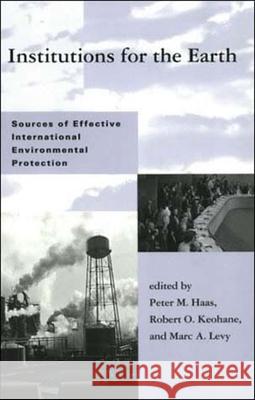Institutions for the Earth: Sources of Effective International Environmental Protection » książka
Institutions for the Earth: Sources of Effective International Environmental Protection
ISBN-13: 9780262581196 / Angielski / Miękka / 1993 / 460 str.
Institutions for the Earth: Sources of Effective International Environmental Protection
ISBN-13: 9780262581196 / Angielski / Miękka / 1993 / 460 str.
(netto: 208,72 VAT: 5%)
Najniższa cena z 30 dni: 218,57
ok. 16-18 dni roboczych
Dostawa w 2026 r.
Darmowa dostawa!
Can environmental institutions be effective at bringing about a healthier environment? How? Institutions for the Earth takes a close look at the factors influencing organized responses to seven international environmental problems - oil pollution from tankers, acid rain in Europe, stratospheric ozone depletion, pollution of the North Sea and Baltic, mismanagement of fisheries, overpopulation, and misuses of farm chemicals to determine the roles that environmental institutions have played in attempting to solve them. Through rigorous, systematic comparison, it reveals common patterns that can lead to improvements in the collective management of these problems and suggests ways in which international institutions can further the case of environmental protection.The contributors identify three major functions performed by effective international environmental institutions: building national capacity, improving the contractual environment, and elevating governmental concern. The international organizations analyzed within this framework include the United Nations Environment Program, the Intergovernmental Maritime Organization, the Food and Agriculture Organization, numerous fisheries commissions, the Commission for Europe, theOslo and Paris Commissions, the Helsinki Commission, and the United Nations Fund for Population Assistance.Peter M. Haas is Associate Professor of Political Science at the University of Massachusetts, Amherst. Robert 0. Keohane is Stanfield Professor of International Peace at Harvard University. Marc A. Levy is Assistant Professor of Politics and International Affairs at Princeton University and Associate at Harvard's Center for International Affairs.











